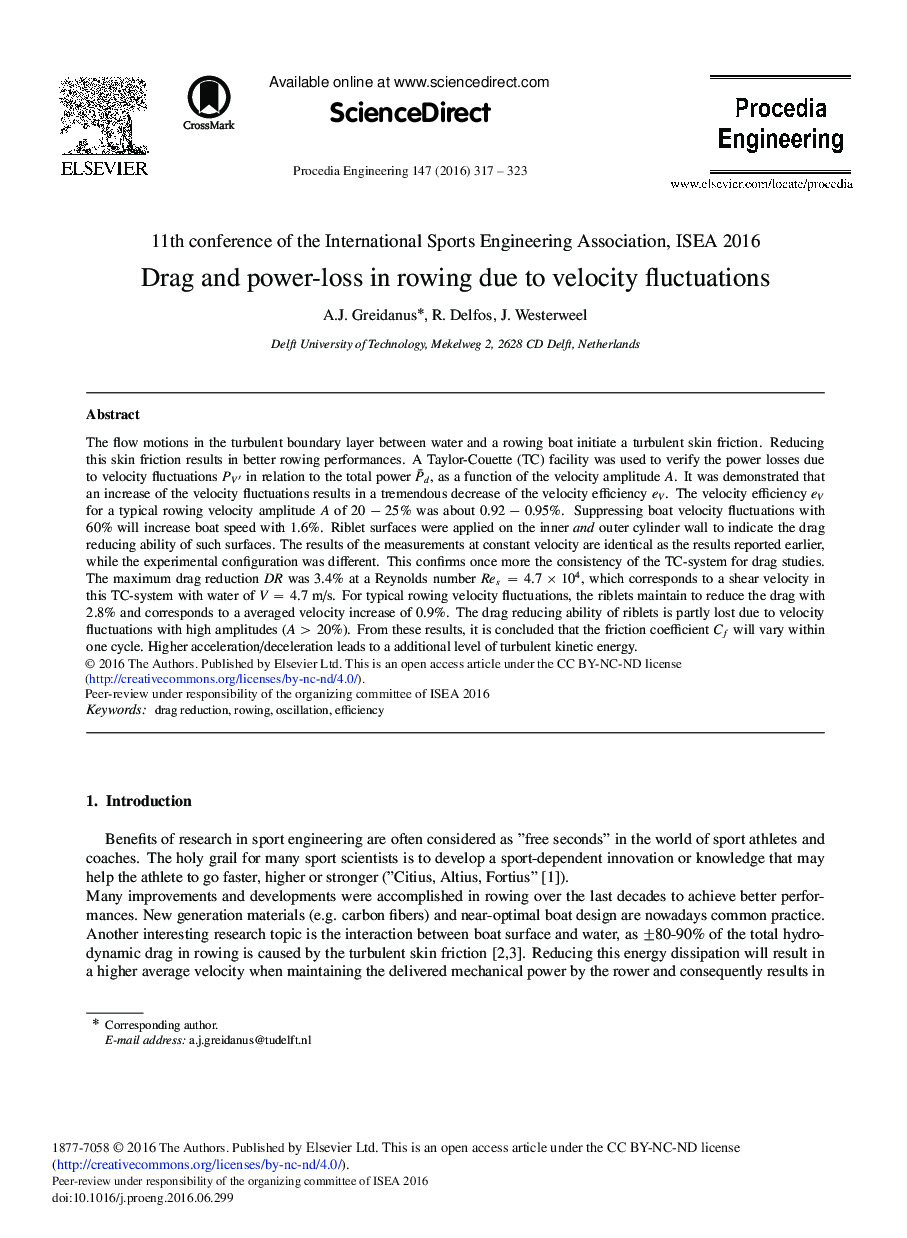| کد مقاله | کد نشریه | سال انتشار | مقاله انگلیسی | نسخه تمام متن |
|---|---|---|---|---|
| 853401 | 1470679 | 2016 | 7 صفحه PDF | دانلود رایگان |
The flow motions in the turbulent boundary layer between water and a rowing boat initiate a turbulent skin friction. Reducing this skin friction results in better rowing performances. A Taylor-Couette (TC) facility was used to verify the power losses due to velocity fluctuations PV′ in relation to the total power , as a function of the velocity amplitude A. It was demonstrated that an increase of the velocity fluctuations results in a tremendous decrease of the velocity efficiency eV . The velocity efficiency eV for a typical rowing velocity amplitude A of 20 – 25% was about 0.92 – 0.95%. Suppressing boat velocity fluctuations with 60% will increase boat speed with 1.6%. Riblet surfaces were applied on the inner and outer cylinder wall to indicate the drag reducing ability of such surfaces. The results of the measurements at constant velocity are identical as the results reported earlier, while the experimental configuration was different. This confirms once more the consistency of the TC-system for drag studies. The maximum drag reduction DR was 3.4% at a Reynolds number Res 4.7 × 104, which corresponds to a shear velocity in this TC-system with water of V 4.7 m/s. For typical rowing velocity fluctuations, the riblets maintain to reduce the drag with 2.8% and corresponds to a averaged velocity increase of 0.9%. The drag reducing ability of riblets is partly lost due to velocity fluctuations with high amplitudes (A > 20%). From these results, it is concluded that the friction coefficient Cf will vary within one cycle. Higher acceleration/deceleration leads to a additional level of turbulent kinetic energy.
Journal: Procedia Engineering - Volume 147, 2016, Pages 317–323
